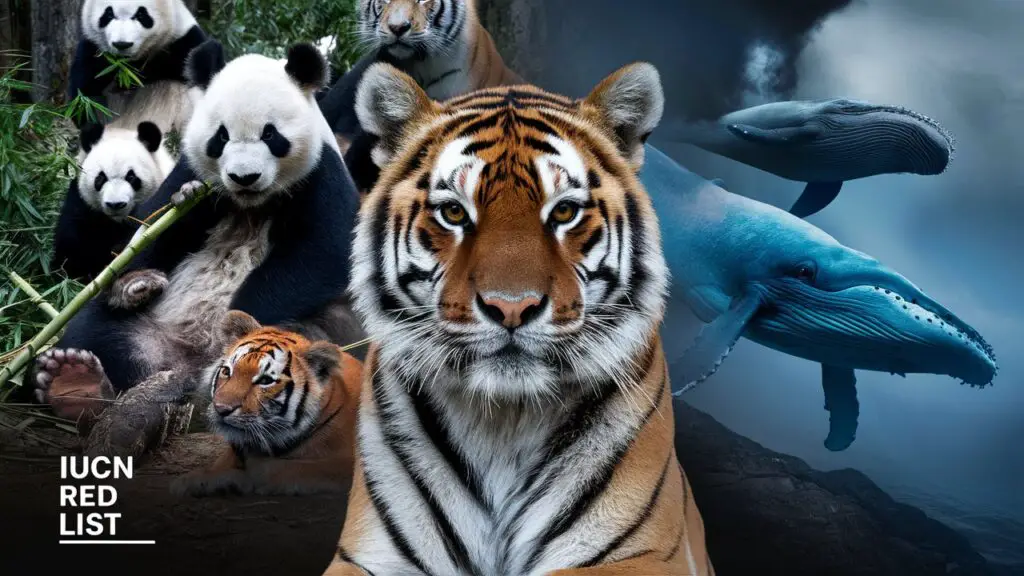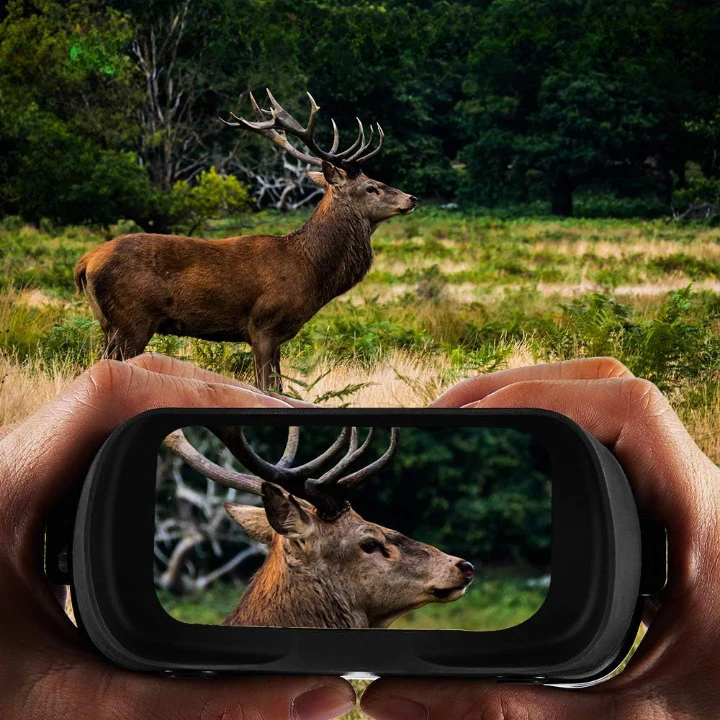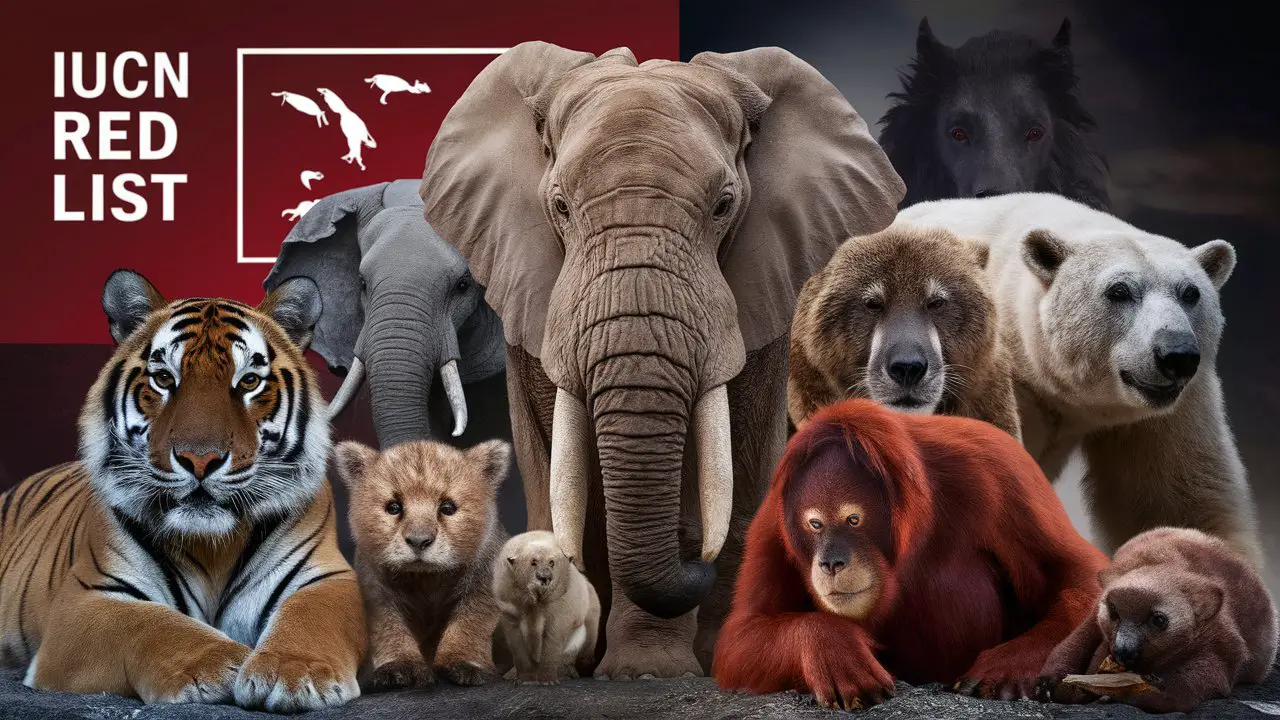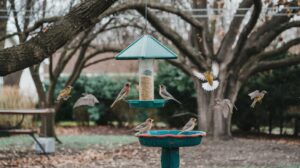As an environmentally-conscious global citizen in 2024, the IUCN Red List remains an essential tool for you to understand the conservation status of plant and animal species around the world. Over 100,000 species have now been assessed by the International Union for Conservation of Nature, providing you with the most comprehensive data on threatened and endangered species. With over 40,000 species threatened with extinction, it is more crucial than ever that you use the IUCN Red List as a guide for supporting conservation efforts. This article will overview the list’s key features so you can utilize it as an informative resource in your advocacy and activism.
What Is the IUCN Red List?
The IUCN Red List of Threatened Species is the world’s most comprehensive inventory of the global conservation status of plant and animal species. Managed by the International Union for Conservation of Nature (IUCN), the Red List provides taxonomic, conservation status, and distribution information on plants and animals that have been assessed using the IUCN Red List Categories and Criteria.
Assessing Species Conservation Status
The IUCN Red List uses quantitative criteria to evaluate the extinction risk of thousands of species and subspecies. Species are classified into one of eight categories: Extinct, Extinct in the Wild, Critically Endangered, Endangered, Vulnerable, Near Threatened, Least Concern, and Data Deficient. The criteria assess population size, geographic range, and trends in population and range to determine a species’ risk of extinction. Species classified as Critically Endangered, Endangered or Vulnerable are collectively described as “Threatened”.
The Importance of the Red List
The IUCN Red List is crucial for guiding conservation action and policy decisions. It identifies and documents species that are facing a higher risk of global extinction to ensure their protection and recovery. The data provided by the Red List are used to prioritize conservation efforts, allocate funding, and inform policy changes. It is widely recognized as the authority on the status of biodiversity and an important tool to identify biodiversity hotspots.
Limitations and Future Directions
While the IUCN Red List represents the best available knowledge on species extinction risk, some limitations exist. Not all species have been assessed, assessments are not always recent, and limited data can affect classifications. However, the Red List is continuously updated as new data become available and improvements are made to the assessment process. The IUCN aims to assess 160,000 species in the coming decades to provide a more comprehensive understanding of the status of life on our planet.
How Species Are Assessed for the IUCN Red List
The IUCN Red List assesses species to determine their conservation status based on specific criteria. Species are evaluated by experts from around the world, relying on scientific data and field research. Assessments go through a rigorous review process to ensure accuracy before being added to the Red List.
Data Collection
The first step is gathering data on a species’ geographic range, habitat, ecology, threats, and population size and trends. This information comes from published studies, museum records, and field surveys. The data are then analyzed to determine if the species meets the threshold for a threatened category.
Defining Categories
The IUCN defines precise criteria for each Red List category. For example, to qualify as “Endangered,” a species must have experienced a ≥50% decline over the last 10 years or three generations, whichever is longer. The criteria emphasize rate of decline, small population size, restricted range, and vulnerability.
Review Process
Draft assessments go through several rounds of review by independent experts, who evaluate whether the data fully support the proposed status. If there are discrepancies, the assessment is revised. Once approved, the final assessment is published on the IUCN Red List website, where it can be periodically reassessed if new information becomes available.
Limitations and Uncertainties
While the Red List aims to be objective, some level of uncertainty is inevitable. Many species lack comprehensive data, making it difficult to determine an accurate category. Changing technologies and methods can also lead to different conclusions over time. However, by relying on the best available science and a rigorous review process, the IUCN produces the most authoritative assessments on species’ extinction risk. Overall, the Red List is an enormously useful tool for guiding conservation policy and action across the globe.
IUCN Red List Categories Explained
The IUCN Red List categories classify species according to their risk of extinction. Species are assigned to one of eight categories based on a set of quantitative criteria. The three threatened categories are Critically Endangered, Endangered and Vulnerable.
Critically Endangered
Critically Endangered species face an extremely high risk of extinction in the wild. These species have declined by 80% or more over the last 10 years or three generations, whichever is longer. Their population sizes are very small, restricted to a few localities, or their habitat has been severely fragmented. Urgent action is needed to halt further declines and prevent extinction.
Endangered
Endangered species face a very high risk of extinction in the wild. These species have declined by 70% or more over the last 10 years or three generations. Their population sizes are small, and they may be found only in restricted areas or their habitat has been seriously fragmented. Conservation action is needed to prevent further declines and support recovery.
Vulnerable
Vulnerable species face a high risk of extinction in the wild. These species have declined by 50% or more over the last 10 years or three generations. Their population sizes are relatively small, they may be restricted to a limited number of locations, or their habitat has become fragmented. Targeted conservation action is needed to prevent significant further declines and support recovery of these species.
The IUCN Red List is the world’s most comprehensive inventory of the global conservation status of plant and animal species. It is a critical indicator of the health of the world’s biodiversity. By assessing both the rate of decline in populations and the total number of remaining individuals, the IUCN Red List categories provide a standardized method for classifying species at high risk of global extinction.

The Importance of the IUCN Red List for Conservation
The IUCN Red List of Threatened Species is the world’s most comprehensive inventory of the global conservation status of plant and animal species. It is a critical indicator of the health of biodiversity worldwide. ###Assessing Species Vulnerability The IUCN Red List uses precise criteria to evaluate the extinction risk of thousands of species and subspecies. Species are classified into categories ranging from “least concern” to “critically endangered” based on factors such as rate of decline, population size, area of distribution, and degree of population fragmentation. This data helps scientists determine which species are most vulnerable and in need of conservation action. ###Informing Policy and Action The IUCN Red List is an invaluable tool for guiding conservation policy and priority setting. By highlighting species at high risk of extinction, it helps governments, NGOs, and researchers target limited resources to where they are most urgently needed. Conservation programs can then work to combat threats such as habitat loss, poaching, pollution, and climate change. Over time, reassessments of species also allow for monitoring the effectiveness of conservation efforts. ###A Call to Action The latest IUCN Red List report is a sobering reminder of the pressures facing biodiversity in the 21st century. However, it also presents an opportunity. By understanding threats to species and their habitats, we can work together to mitigate them through improved policy, land management, and global cooperation. No species is beyond saving if we have the will and determination to protect it. The IUCN Red List is a call to action we must heed to build a sustainable future for life on Earth.
Overall, the IUCN Red List is an essential tool for cataloging and safeguarding the diversity of life on our planet. By providing a global standard for species assessment and a stark warning of the dangers of inaction, it spurs society as a whole into taking responsibility for the natural world and all the benefits it provides. We all have a role to play to ensure that future generations can inherit a world as rich in plants and animals as our own.
IUCN Red List Frequently Asked Questions
The IUCN Red List of Threatened Species is the world’s most comprehensive inventory of the global conservation status of plant and animal species. It is a critical indicator of the health of the world’s biodiversity. The Red List provides taxonomic, conservation status and distribution information on plants, fungi and animals that have been globally evaluated.
What species are on the IUCN Red List?
The IUCN Red List includes comprehensive assessments of the conservation status of over 100,000 species of plants, animals and fungi. Species are assigned to one of eight categories of threat based on criteria such as rate of decline, population size, area of geographic distribution, and degree of population and distribution fragmentation.
How are species assessed for the IUCN Red List?
Species assessments are conducted by IUCN Species Survival Commission (SSC) Specialist Groups and Red List Authorities. They evaluate species based on the IUCN Red List Categories and Criteria, which is the world’s most widely accepted system for classifying extinction risk. Assessments include information on a species’ geographic range, population trends, habitat requirements, threats, and conservation measures.
How often are species reassessed?
Species assessments are reviewed and updated regularly to ensure the listings remain current and accurately reflect a species’ conservation status. The frequency of reassessment depends on the biology of the species, the intensity of threats, and available resources. Most species are reassessed every 5-10 years, while some are reassessed more frequently if there are known or suspected changes in status.
What can I do to help species at risk?
There are many ways individuals can help support species conservation and the IUCN Red List:
- Raise awareness about threatened species in your local community.
- Support organizations working to protect biodiversity and habitats.
- Reduce your environmental footprint by using sustainable energy, decreasing waste, and making eco-friendly choices.
- Participate in citizen science projects to help monitor species and habitats.
- Contact government representatives and ask them to make conservation a priority.
- Travel to experience nature and learn about threatened species firsthand. Tourism income can support local communities and conservation efforts.
The IUCN Red List is critical for guiding global conservation action and policy decisions. By understanding threats facing species and taking action to support conservation, we can all play a role in protecting biodiversity for future generations.
Don’t Miss a Thing! Enhance Your Wildlife Photography with Ultra-X Night Vision Goggles.
Get Now!

Conclusion
As you can see, the IUCN Red List serves a vital role in conservation efforts worldwide. By categorizing species based on their risk of extinction, it sounds the alarm for animals and plants in peril. The list mobilizes action from governments, NGOs, and individuals to enact protections and habitat recovery for threatened organisms. While far from perfect, the Red List gives us an invaluable global perspective on the biodiversity crisis. With so many species balancing on a knife’s edge, we all must step up as stewards of the planet. Each of us can make a difference, whether by changing habits, donating, volunteering, or simply spreading awareness. The responsibility falls on everyone to create a livable world for all life, now and for generations to come.





